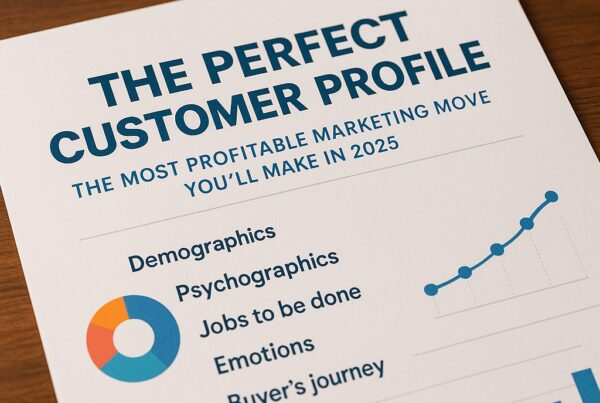Maximize Your Impact: How to Market Your Small Business Effectively
Looking for effective ways on how to market your small business? This guide cuts through the noise to deliver straightforward marketing strategies specifically geared toward small businesses. We’ll walk you through the essentials, from crafting a compelling online presence to mastering content marketing and harnessing community connections geared for tangible results. Prepare for a practical walkthrough that empowers you to act now, with insights to advance your brand without the complexity.
Key Takeaways
- Effective marketing for small businesses necessitates a comprehensive strategy, including market research, defining goals, understanding the target audience, and aligning tactics with strategies for higher ROI, emphasizing the importance of online presence through a professional website, social media engagement, and SEO.
- Content marketing, through value-added blog posts, visual content, and a well-curated editorial calendar, alongside email marketing with personalization, automation, and performance tracking, are essential for customer engagement and lead nurturing.
- Paid advertising (PPC and targeted social ads), building a network through community and partnering with local businesses, and harnessing reviews and testimonials are critical for expanding reach, credibility, and trust. Innovating with guerrilla marketing techniques can also create buzz but requires careful risk assessment.
Crafting Your Small Business Marketing Blueprint

Effective marketing of your small business begins with the creation of a comprehensive small business marketing strategy. This involves:
- Market research
- Defining long-term goals
- Identifying your target audience
- Creating buyer personas
- Aligning marketing tactics with these marketing strategies
It’s critical to distinguish between a marketing strategy, which outlines your overall approach, and marketing tactics, which are the specific steps to achieve your goals.
A higher return on investment is more likely when you consistently refine your strategies and align your marketing efforts with business goals.
Setting Clear Marketing Goals
Setting clear marketing goals is crucial for focusing your efforts and resources on strategies more likely to succeed. These goals provide a framework for establishing objectives that are:
- Specific
- Measurable
- Achievable
- Relevant
- Time-bound (SMART)
Defining SMART goals allows for effective guidance of your marketing initiatives and accurate measurement of success.
Setting goals is the first step.
Achieving them is the next. Book a call with me here, and let’s discuss how to align your marketing efforts with your business objectives for measurable success.
Understanding Your Target Market
Market research is essential to understand your target audience’s demographics, behaviours, and preferences, which are critical for determining the success of your marketing efforts. You can craft better messages and optimize your marketing spend by defining your target market.
Effectively tailoring your offerings to existing customers can increase return on investment, facilitated by analyzing current customer data for trends and insights.
Aligning Tactics with Strategies
Aligning your marketing tactics with your strategies ensures that your efforts are focused and effective in attracting the intended customers. This coherence makes your approach impactful. An integrated marketing plan includes:
- Situation analysis
- Identification of target markets
- Positioning
- Setting marketing objectives
- Outlining strategies and tactics
- Setting evaluation and control mechanisms.
Ready to turn your marketing blueprint into action?
Don’t navigate this journey alone. Click here to book a 15-minute call with me. Together, we can refine your strategy and set your small business on the path to success.
Establishing a Strong Online Presence

Maintaining a strong online presence is indispensable for any business in this digital age. It’s how consumers primarily learn about local businesses. A professional business website is essential for showcasing your offerings, attracting organic traffic, and converting visitors into leads.
Engaging on social media platforms and effective social media marketing can also help gain new followers and buyers.
Building a User-Friendly Business Website
A responsive website design improves user experience by adapting to screen size. This leads to faster load times and properly scaled images, enhancing your business’s professional image.
A responsive web design saves money and simplifies website management by eliminating the need for separate mobile and desktop versions.
Leveraging Social Media Platforms
The key to an effective social media strategy is to focus on one or two platforms that align with your target audience and business goals. This ensures more effective audience engagement through social media.
Facebook, Instagram, Twitter, and YouTube are essential social media channels that can help increase your audience, each catering to different demographic groups and content preferences on these social media platforms.
Optimizing for Search Engines
Search engine optimization (SEO) is a critical aspect of improving your website’s visibility and ranking on search engine results pages. You can significantly enhance your website’s performance by creating SEO-friendly content, including keywords, headlines, and meta descriptions.
Engaging with Customers through Content Marketing
Content marketing is a powerful tool for creating and nurturing customer relationships. Establishing your business as an industry authority can be achieved through the development of valuable blog posts, the utilization of visuals and video, and the creation of an editorial calendar.
Crafting Valuable Blog Posts

Effective blog posts address customer issues and provide actionable advice. They not only offer immediate solutions but also evergreen content that retains relevance over time.
Engaging with the audience to understand their pain points can facilitate the development of content that genuinely resonates with readers.
Utilizing Visuals and Video
Visual content is essential for small businesses. More than half of global internet users engage primarily with videos, TV shows, and movies online. Stronger brand affiliation and increased viewer engagement can be achieved by incorporating visuals and video content into your marketing strategy.
Developing an Editorial Calendar
Through an editorial calendar, a balanced mix of educational, entertaining, and promotional content can be ensured. It fosters collaboration and accountability within the marketing team, securing support and input from all stakeholders.
Content is king, but engagement is queen.
Ready to rule your domain with compelling content that converts? Click here to book a strategy session and elevate your content marketing game.
Nurturing Leads with Email Marketing

Email marketing is a powerful tool for nurturing leads and an essential component of online marketing. By creating compelling email campaigns, using automation, and measuring performance, prospective customers can be efficiently guided through the sales funnel.
Creating Compelling Email Campaigns
Personalized email campaigns can boost engagement and conversion rates. Including the recipient’s name and personalizing content based on their interests and past interactions can enhance user engagement and click-through rates.
Using Automation to Save Time
The use of predefined rules in email automation helps initiate email communications based on specific customer behaviours or lack of action. This not only saves time but also makes marketing efforts more efficient.
Measuring Email Performance
Assessment of success and informing strategic decisions rely on monitoring key metrics in email marketing. These metrics include open rates, click-through rates, conversion rates, and bounce rates.
Amplifying Reach with Paid Advertising

Amplifying reach and driving customers to your business can be achieved with powerful tools like paid advertising, including pay-per-click (PPC) ads and targeted social media ads. It complements SEO efforts and can provide an immediate boost to your online visibility.
Exploring Pay-Per-Click (PPC) Options
PPC advertising provides immediate results and is particularly beneficial for startups or small businesses in need of quick traffic drivers to their websites. Effective targeting of solution-aware individuals can be achieved by bidding on specific keywords that your audience searches for online.
Budgeting for Ad Spend
Budgeting for advertising spend is critical for any small business. Effective budget allocation, emphasizing high ROI strategies and reevaluation of underperforming channels, can be achieved by reviewing and analyzing historical marketing campaign performance.
Tracking and Adjusting Campaigns
Tracking key performance indicators such as:
- click-through rates
- conversion rates
- cost-per-click
- impressions
- page views
Is critical to assess the success of ad campaigns. Strategic adjustments to improve the efficacy of your marketing efforts can be made based on this data.
Building Community and Networking
Building a strong network is invaluable for increasing a small business’s credibility, name recognition, and access to educational resources and networking events. As a small business owner, this can greatly contribute to your success.
Enhanced word-of-mouth, facilitated shared marketing resources, and access to wider customer bases can be achieved through collaboration with local businesses.
Partnering with Local Businesses
Collaborating with local businesses can lead to the following:
- Increased visibility within the community
- Improved credibility
- Creation of comprehensive service solutions by pooling resources with companies that share similar customer bases.
Participating in Local Events
Attending local events and joining business associations can:
- Lead to increased brand awareness
- Generate new leads
- Provide an opportunity to treat loyal customers
- Showcase business achievements
Cultivating Customer Relationships
Maintaining trust and satisfaction is crucial, and it hinges on the consistency between a brand’s promise about the customer experience and the actual service delivery.
Key to maintaining trust and satisfaction is delivering a customer experience that not only reflects the organization’s unique value proposition but also aligns with customer expectations.
Harnessing the Power of Reviews and Testimonials
Online reviews and testimonials can shape a business’s digital reputation and build trust among potential customers. Demonstration of the value of your products or services and leveraging word of mouth, as well as social media for referrals, can be achieved by encouraging satisfied customers to share their experiences.
Implementing a Review Strategy
Integration of call-to-action buttons and pop-ups that direct customers straight to review pages on platforms like Yelp or Google Business Profile can help implement a review strategy on your website.
Responding to Feedback
Responding to customer feedback promptly demonstrates that their input is valued and taken seriously. Strong customer relationships can be fostered by thoughtfully handling each review and showing appreciation for customer experiences.
Showcasing Success Stories
Showcasing customer success stories can enhance your business’s credibility and attract more customers. Compelling success stories that resonate with potential customers can be created by presenting a relatable problem and illustrating how your product or service provided a solution.
Innovating with Guerrilla Marketing Techniques
Guerrilla marketing emphasizes creativity over budget and often involves cheap and localized strategies that can create substantial buzz and differentiate small businesses in a crowded market.
Exploring Unconventional Strategies
Unconventional marketing tactics have the potential to create substantial buzz and differentiate small businesses in a crowded market. The powerful narrative and engagement that such strategies can leverage are showcased in examples of successful guerrilla marketing campaigns, such as McDonald’s Quarter Pounder Fan Club and Samsung’s ‘Capture The Night’ campaign.
Assessing Risk vs. Reward
While guerrilla marketing tactics are known for their audacity and ability to stand out, businesses must carefully weigh the risks against the potential rewards. Should they result in negative perceptions of the brand, guerrilla marketing campaigns can backfire.
Measuring Impact
To assess their success and inform future strategies, it is crucial to measure the impact of guerrilla marketing campaigns. Analytical assessment includes evaluating quantitative metrics such as engagement and website traffic, as well as qualitative metrics like brand sentiment and the conversations around the brand.
Summary
In conclusion, marketing a small business effectively requires a well-crafted strategy, an understanding of your customers, clear marketing goals, a strong online presence, and engaging content. Additionally, nurturing leads with email marketing, amplifying reach with paid advertising, building a strong network, harnessing the power of reviews and testimonials, and exploring unconventional guerrilla marketing techniques can greatly enhance your marketing efforts. Remember, the key to successful marketing isn’t about big budgets or flashy ad campaigns but about understanding your customers and meeting their needs in a way that sets you apart from the competition.
You’ve got the insights; now it’s time to act.
If you’re looking for personalized advice on implementing these strategies in your business, I’m here to help. Schedule your 15-minute strategy call with me here and let’s maximize your business’s impact together.
Frequently Asked Questions
How to promote a small business?
Promote your small business by leveraging tactics like guest posting, SEO, email marketing, social media, local events, and product reviews. These strategies can help increase visibility and attract potential customers without the need for traditional advertising methods.
What type of marketing is best for small business?
Digital marketing, including social media, email, and content marketing, is best for small businesses as it offers cost-effective methods to reach and engage with a targeted audience.
How do I get new customers for my business?
To gain new customers for your business, you can utilize social media, offer free trials, include calls to action, leverage current customers, hold events, and invest in SEO and website optimization. Additionally, defining your target audience, utilizing social media, and offering excellent customer service can attract customers effectively. Start by using these strategies and see how they work for your business.
What is marketing in small business?
In conclusion, marketing in small business refers to the process of promoting, selling, and distributing products or services to attract and retain customers. This helps generate customer interest and drive sales.
What is the importance of a well-crafted marketing strategy for small businesses?
A well-crafted marketing strategy is important for small businesses because it helps focus marketing efforts and resources on strategies that are more likely to succeed.



